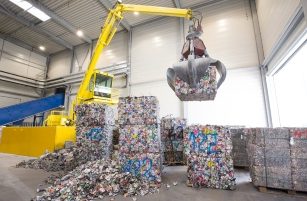Aluminium scrap is the most essential input material to the recycling process.
Aluminium scrap is often categorised as “new scrap” from production processes and “old scrap” from post consumer use.
New scrap arises during the manufacturing of aluminium semi-fabricated and final products. Old scrap refers to those products collected after disposal by consumers. Old scrap is often more contaminated than new scrap. End-of-life vehicles, demolished buildings and constructions, discarded packaging material, home and office appliances, as well as machinery equipment are all potential sources of old aluminium scrap.
The collection and sorting of aluminium scrap, especially old scrap, is often a complex scheme involving millions of households, local and regional authorities, small and medium collectors and metal merchants. Waste and environmental policies can also have strong influences on the effectiveness of collection schemes.
Sorted aluminium scrap may need to be separated further and pre-treated before the metal can be recovered in melting furnaces. Separation of aluminium at this stage can be done by various mechanical operations, such as magnetic, gravity, eddy current, or colour sensor. Further separation of different aluminium alloys can also be achieved through x-ray methods. Often wrought alloys and casting alloys are, whenever possible, separated before the mechanical processes.
Other input materials are also required to transform valuable aluminium scrap into aluminium metal. Alloying elements are crucial to the wide range of functionalities and characteristics of aluminium products. In refining aluminium scrap, impurities that cannot be removed by mechanical separation will be eliminated through the addition of salt flux in the melting furnaces.

